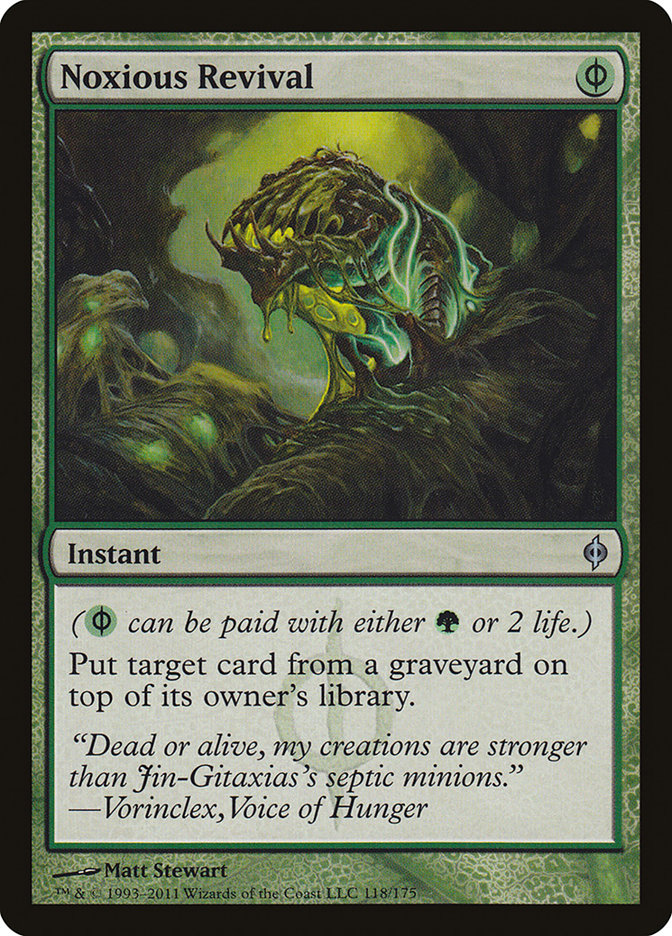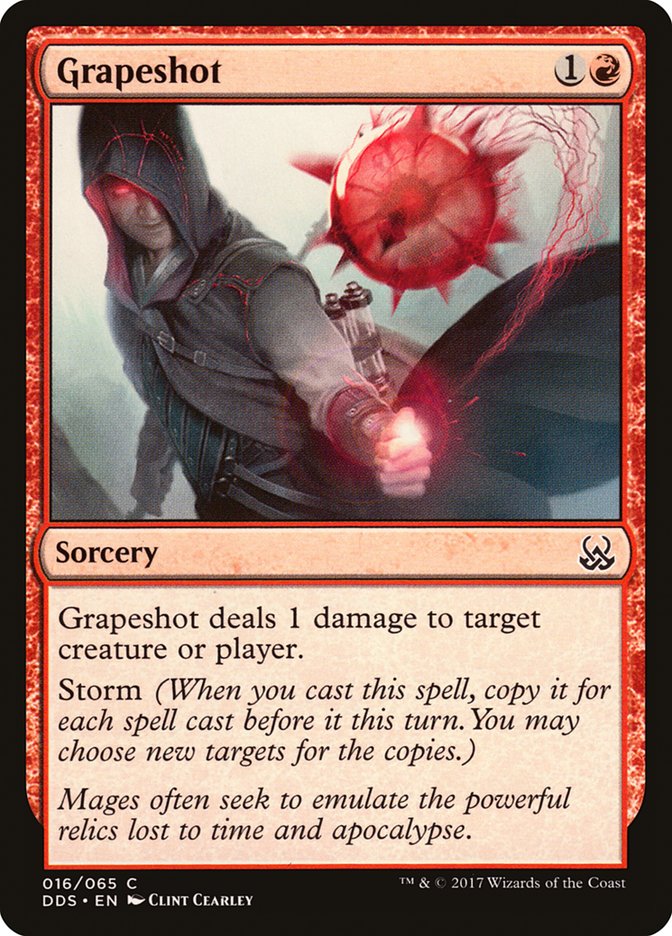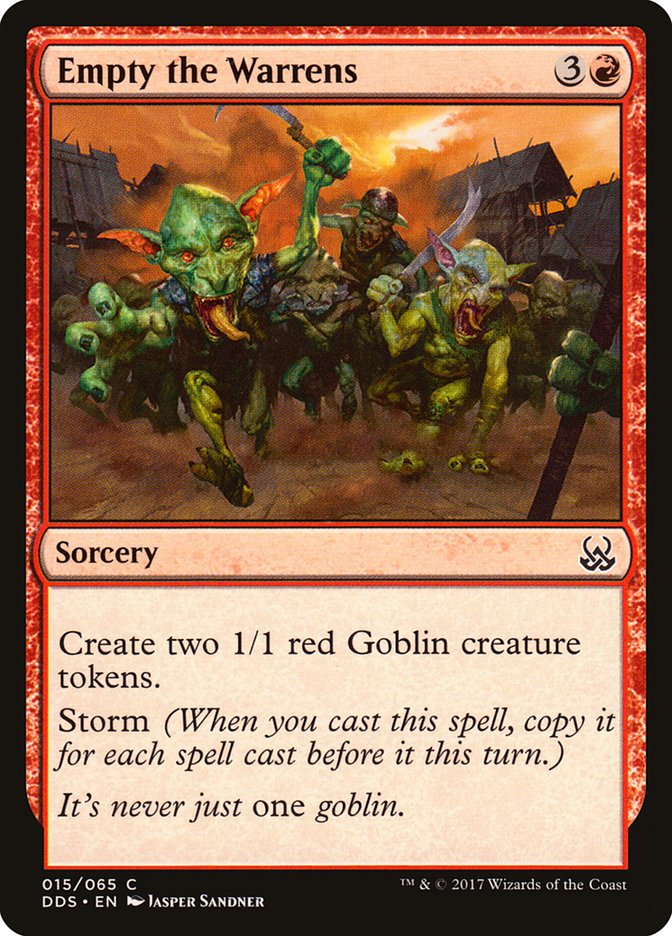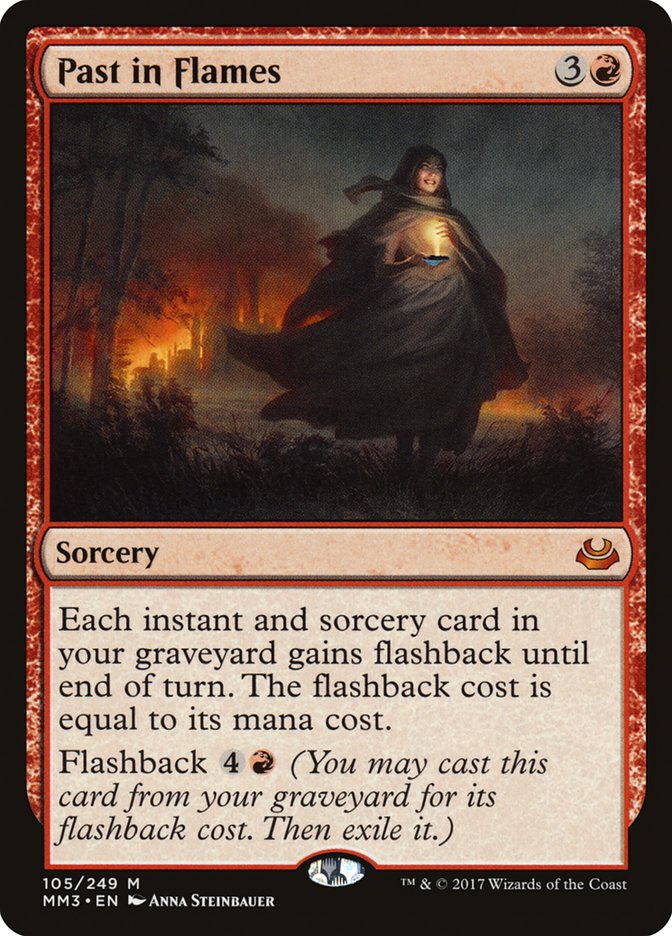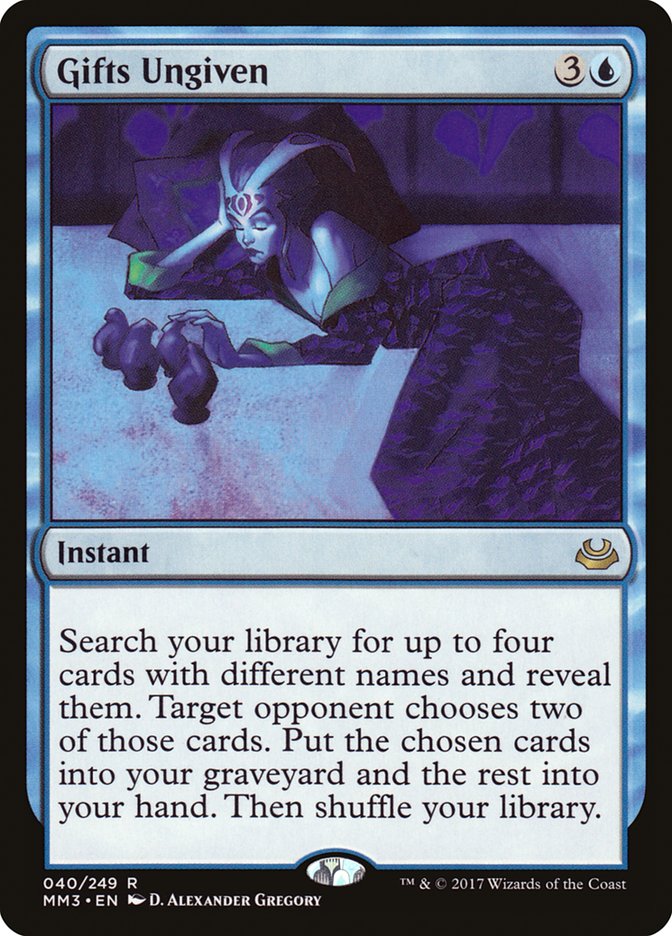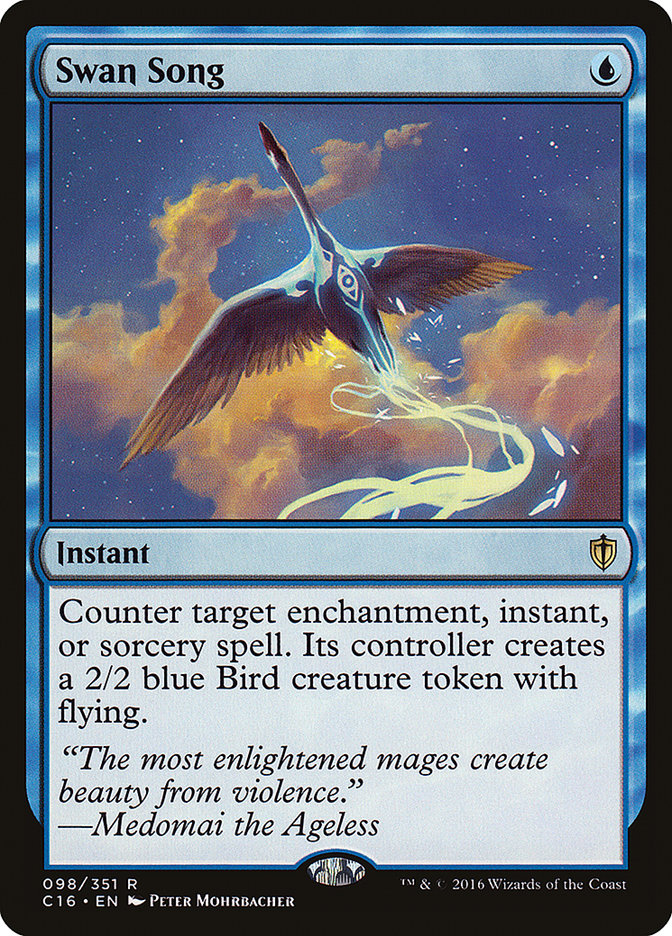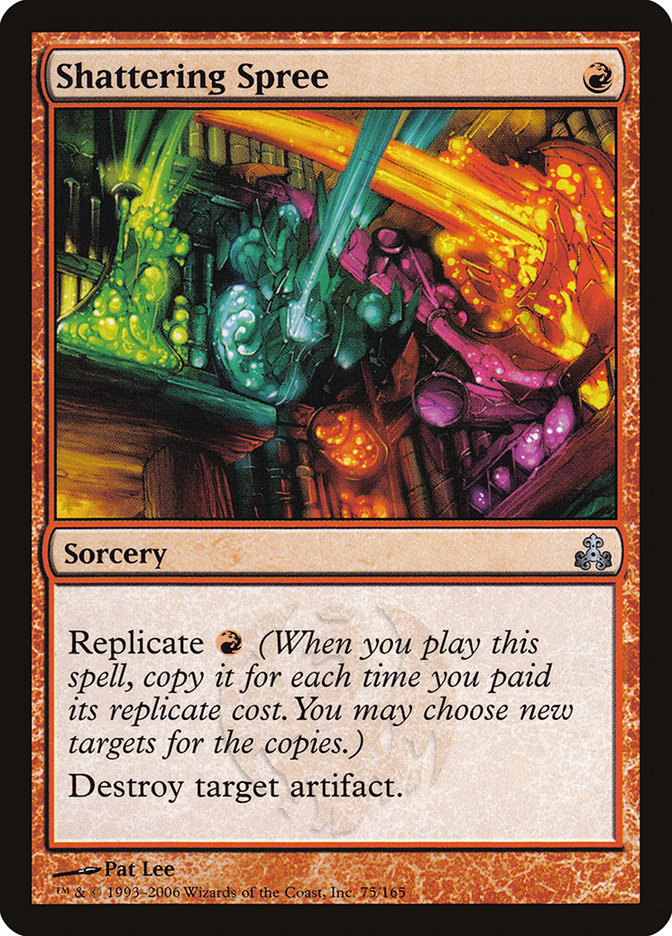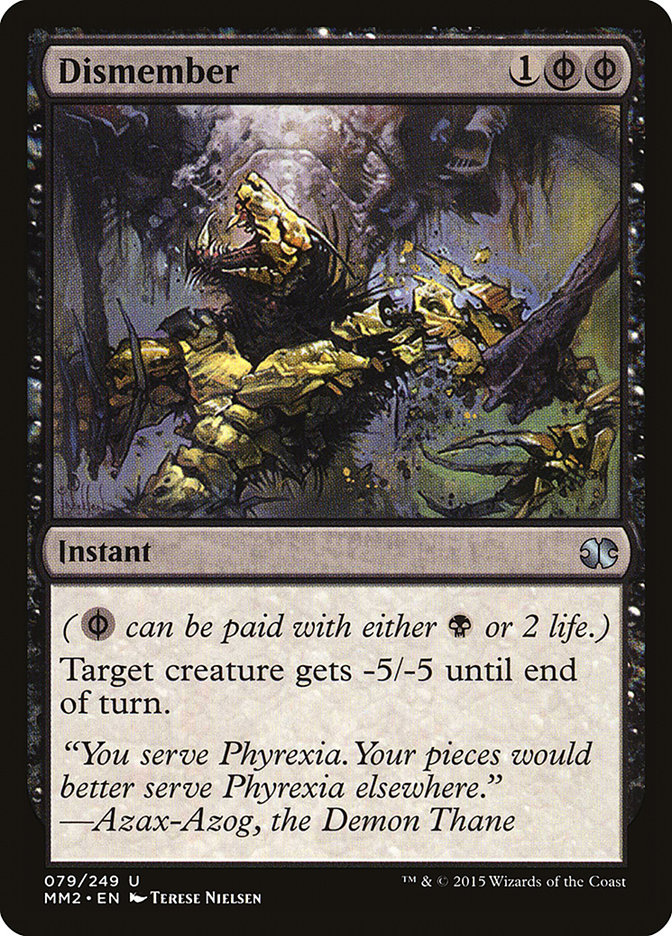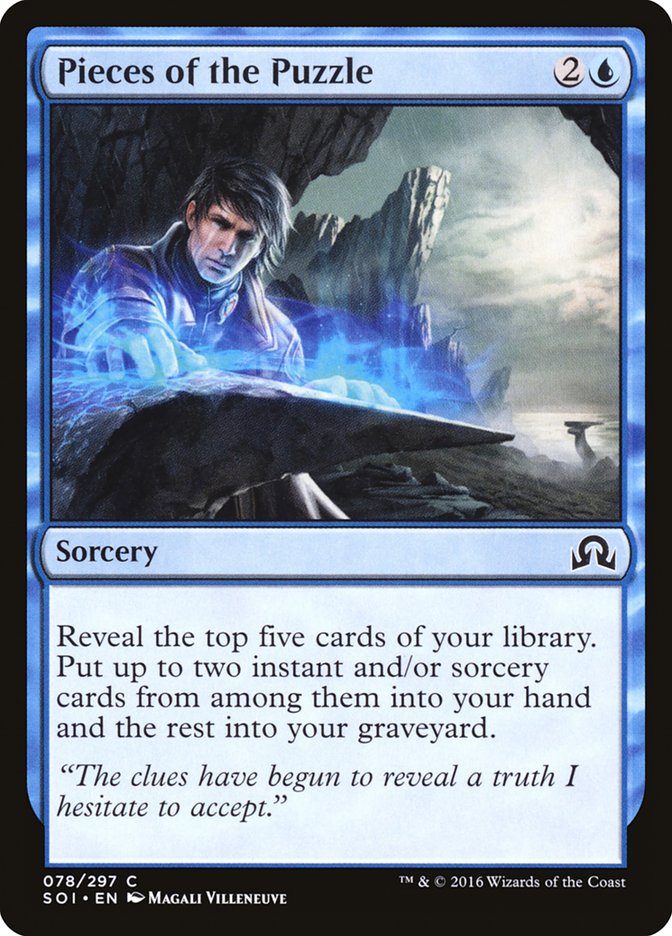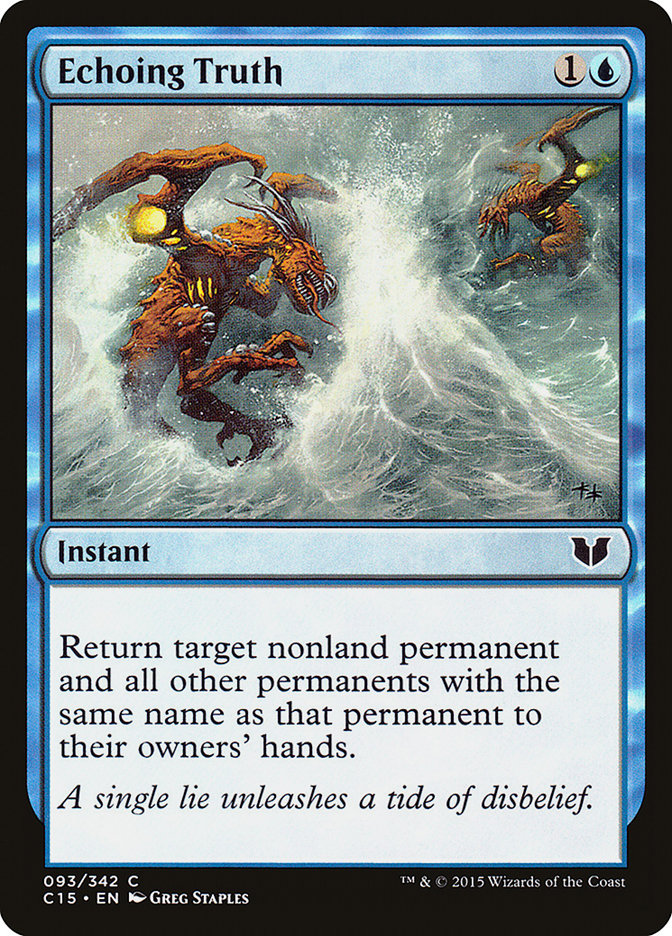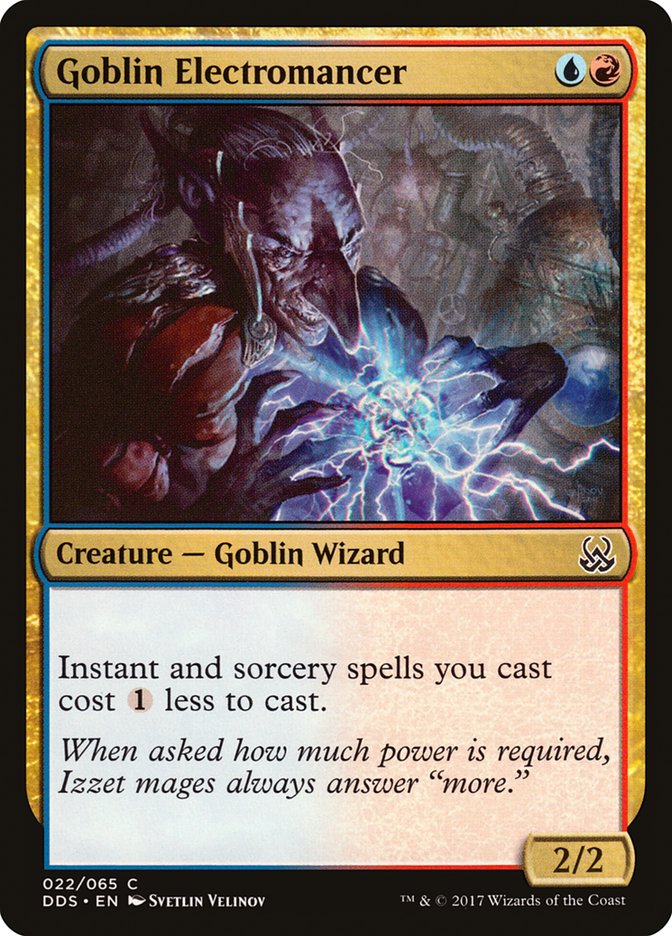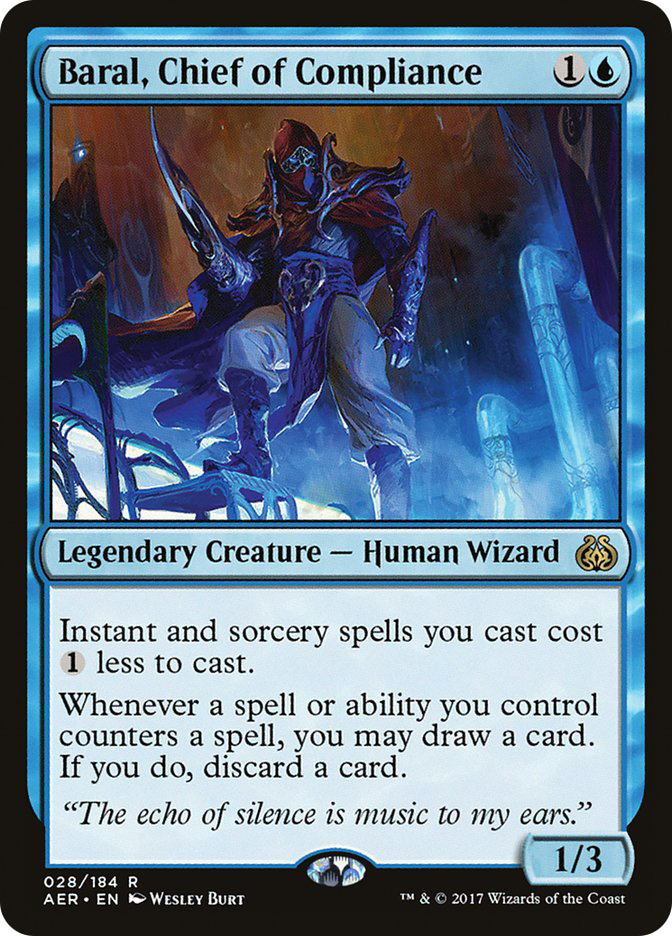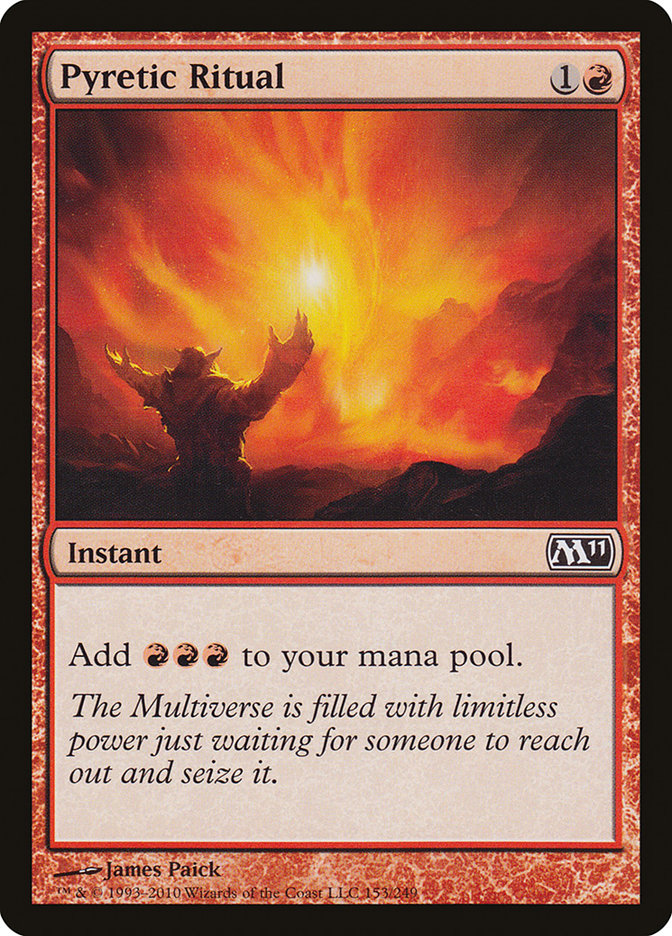I hate trying to master an archetype.
Despite the fact that my primary source of income is
coaching/playing/streaming/playing/living Magic, I consider myself a
student of the game. Generally speaking, this leads to me jumping from deck
to deck relatively frequently in an attempt to gain the most knowledge
relative to time invested in learning. My goals in Magic don’t really line
up with mastering a single archetype, and as a result, I tend to think of
additional reps with a deck as having diminishing returns after gaining a
reasonable understanding of an archetype.
That’s all to say that learning the ins and outs of a deck takes a lot of
time, and is hard. At this point I’ve probably sunk 100 or more
hours into messing with Storm, trying out different packages, playing and
replaying popular matchups until I figure out what I’m supposed to be doing
in them. It’s taken a lot of time.
After all of that, I’m still figuring things out.
At the risk of getting too far ahead of myself, here’s my current iteration
of U/R Gifts Storm:
Creatures (8)
Lands (18)
Spells (34)

First things first, let’s go ahead and address the elephant in the room: I
haven’t changed the deck very much from my
article a few weeks ago. I ran a very similar list in my video series that ended up
being a pretty easy 5-0.
I’m confident in a majority of the decklist, and I’ll go over the choices
that I’ve made to come to this point.
The manabase is something I’ve messed around with a great deal and the only
card that I’m unsure of is the copy of Sulfur Falls over the third Steam
Vents. The motivation for playing the Sulfur Falls is that it is generally
a free source of multicolored mana, and one of the most attractive features
of this deck is how close to painless the manabase can be against the
aggressive strategies. The biggest drawback to playing the card is that it
isn’t fetchable, and there’s a non-zero amount of the time that that is a
real liability. Sometimes Polluted Delta needs to get a third red source
and two copies of Steam Vents have already been fetched out of the deck.
More games are needed to determine which land is better.
Past that, everything else in the lands is done with purpose:
- Scalding Tarn fetches both basics.
- The other fetches are made with signaling in mind. Polluted
Delta-into-Steam Vents-into-Serum Visions can look like Death’s Shadow.
Flooded Strand-into-tapped-Steam Vents can look like Jeskai Control.
Hedging a bit between the two lowers the odds of getting wrecked by Pithing
Needle or Surgical Extraction. - The number of basics wanted in the deck is three Islands and one
Mountain. This is because it’s more common to need multiple blue mana on
combo turns, and the Rituals don’t generate blue. - The Snow-Covered Island is in case Gifts Ungiven needs to get a blue
source while under a Blood Moon. It allows for piles with Island,
Snow-Covered Island, Manamorphose, and another card, guaranteeing a blue
source being added to hand. - Spirebluff Canal is a basically an un-fetchable Volcanic Island in this
deck.
If we see a resurgence in Temur Scapeshift or another Misty Rainforest /
Steam Vents deck, it may become justifiable to include Misty Ranforest in
the deck. Otherwise I think of it as a dead giveaway that its controller is
playing a deck with all-blue fetches. From there, it isn’t hard to infer
the deck is Storm.
A number of Storm pilots waffle between seven and eight “Discount Bears” in
the deck, and I’ve arrived at eight based on a couple of theories I have on
deckbuilding with combo decks.
The first is that it is generally correct to max out on the most powerful
enablers in the deck. Drawing too many is generally a statistical outlier,
but increasing the odds of drawing two or three is going to be better. This
leads to a higher number of games being won on the back of having one on
the battlefield in spite of the opponent having a Lightning Bolt or two.
On top of the resiliency to removal that comes with redundancy, maxing out
on the creatures makes it easier to win through copious amounts of hand
destruction. There have been multiple games that I’ve won on the back of
having a handful of Electromancers on the battlefield while my opponent
shredded my hand. A single Gifts Ungiven or Past in Flames off the top of
the library for a single mana is generally enough to win off a single card.
Having draws with multiple creatures transform these rare scenarios into
games won rather than lost.
These are what I think of as the “enablers” in the deck. Remand somewhat
falls into this category but deserves its own spot. This biggest cards were
talking about are Peer Through Depths and Noxious Revival, as Serum Visions
and Sleight of Hand being included is a no-brainer in a blue Modern combo
deck.
Peer Through Depths is the ninth “true” cantrip that helps set up the combo
before going off. It also serves as a way to create a Gifts Ungiven Package
of exclusively cantrips. This is particularly useful when playing against
graveyard hate. Finding copies of Grapeshot can be rough when playing
through a Rest in Peace, but having this Gifts Ungiven pile makes it a bit
more manageable:
The other options in this slot are basically Anticipate, Telling Time, and
Strategic Planning. Peer Through Depths just provides the most card
selection relative to its converted mana cost. Going five cards deep is
seriously absurd in this style of instant- and sorcery-based combo deck.
The other cards being able to grab lands and creatures is relevant a
nonzero amount of the time, but that amount is really giving zero a run for
its money.
Noxious Revival started out as something that played awkwardly and I was
pretty low on. I was pretty close to giving up on the card, and reader
Andrew Boncher urged me to keep trying it. Since then it has continually
impressed me with all of the things that it can do.
Noxious Revival makes piling with Gifts Ungiven significantly easier when
trying to get a specific type of card. It also can improve the power of a
Gifts Ungiven when you already have Noxious Revival in hand. Turning Gifts
Ungiven into two Demonic Tutors, Vampiric Tutor, and an Entomb is
a big game.
Even during the developmental phases of the game, Noxious Revival can rebuy
fetchlands in order to prevent the Storm pilot from missing land drops.
To summarize Noxious Revival’s strengths: it adds another layer of
redundancy to a deck that wants to be as streamlined and consistent as
possible. Drawing multiple copies is rough, but having the single card in a
deck featuring ways to search for it is invaluable.
Remand does many things in this deck. Outside of “normal Remand things”
we’ve come to expect in Modern (a la punishing big-mana plays),
Remand also serves as protection for our Discount Bears (which make Remand
only cost a single mana) and can be a serviceable combo piece when there
isn’t a Gifts Ungiven in sight. Remanding one’s own Grapeshot comes up more
frequently than one would expect.
Remand plays an important role in post-sideboard games when graveyard hate
is more common. It effectively halves the storm count required to kill with
a payoff card, and it’s easier to kill someone with a Tendrils of Agony
than a Grapeshot.
On the topic of Remanding one’s own spells, the frequency that it’s done in
this deck is startling compared to other archetypes. Swan Song being the
only hard counterspell in the 75 makes it harder to fight against
countermagic. Remanding one’s own spells is a great way to prevent the
opponent from drawing a card off Cryptic Command or stranding an important
card under a Spell Queller.
Caleb Scherer has been a
longtime advocate
of a fetch-less and Remand-less variant of Storm, and after playing as many
games as I have with the deck, I am confident in my assertion that Remand
is secretly one of the most important cards of the deck.
A handful of Storm pilots tend to have a copy of Empty the Warrens in the
maindeck, and I firmly disagree with this stance. Despite having a way to
tutor for Empty the Warrens in Gifts Ungiven, it is generally better in
this style of combo deck to be as streamlined as possible. Drawing two
copies of Grapeshot is generally an easy win, while drawing a copy of Empty
the Warrens and a Grapeshot isn’t a hedge; it’s an awkward division in
one’s gameplan. This completely changes in post-sideboard games, but we’ll
touch more on that later.
The primary point here is that most decks aren’t prepared for a Grapeshot
kill, and hedging between the two kill conditions is going to marginally
improve a handful of matchups while making the deck inherently weaker
against a majority of the field.
This is the card that makes the deck playable in the first place. Since the
release of Innistrad, Past in Flames has been a staple in Storm
decks as a pseudo-Yawgmoth’s Will. In this deck, it’s actually better than Yawgmoth’s Will. Yawgmoth’s Will can only be cast
once, and from the hand. In this deck, Past in Flames can be cast twice, or
once from the graveyard. With a Discount Bear on the battlefield, it costs
the same amount as a Yawgmoth’s Will.
It’s hard to explain why this card is good without just reciting the card
text from other spells in the deck. The short version is that the card
allows the Storm pilot to cast enough spells to get to cast a lethal
Grapeshot. It turns out that casting twenty spells in a single turn with a
maximum hand size of seven can be difficult without getting the graveyard
involved.
An entire article could be written about casting Gifts Ungiven. “Search
your library for up to four cards with different names” means there are a
lot of decisions to be made over the resolution of a single spell. For
those who haven’t played with the deck before, the objective is to find a
set of four cards that don’t involve a “wrong” choice. That’s to say that,
no matter which two cards Gifts Ungiven’s caster is handed, they’re happy
with those cards. These are some of the most common Gifts Ungiven piles.
This is the most common Gifts pile by far. The primary reason is that with
six total mana and a Discount Bear, a Gifts Ungiven presents a lethal
number of spells. Gifts Ungiven costs three mana, which leaves three in the
mana pool. From there, there isn’t a combination of spells the opponent can
leave the Storm player with that don’t result in casting a Past in Flames
with enough resources to continue comboing (including, but not limited to,
re-casting Gifts Ungiven in order to find a Grapeshot).
This is the default “already have Past in Flames” Gifts pile. This
generally signals that the Storm player needs more gas to go off, and even
if the opponent leaves the Gifts caster with Manamorphose and Noxious
Revival, they can just Noxious Revival a Ritual, draw it with the
Manamorphose, and generate mana that way.
This is the “kill” pile. This is the last thing to get when trying to kill
the opponent. The goal is to end up with a Grapeshot and Remand in hand, as
it allows the following sequence:
- Grapeshot, retain priority and Remand the Grapeshot
- Grapeshot, flash back Remand targeting Grapeshot
- Repeat step 2 for each Remand in the graveyard
- Grapeshot from hand
- Grapeshot from graveyard via Past in Flames
This allows the Storm player to deal upwards of 100 damage within a game if
necessary (looking at you, Martyr of Sands).
Alluded to previously, this pile is fondly titled “The Value Gifts.” This
generally happens when the caster of the spell is clogged on multiple Gifts
Ungivens in the hand and just wants to convert them into a bunch of cards.
Rather than shooting in the dark and grabbing random combo pieces, it’s
generally better to grab card selection in these scenarios. This is in
order to sculpt one’s hand and draws for the next few turns.
As mentioned earlier in the article, this pile is almost more common
against decks that play counterspells and graveyard hate, as it exposes the
fewest combo pieces to interaction and allows the Storm player to have more
control over when they pick their spot to try to go off.
Piling in general with Gifts Ungiven is generally going to be a matter of
finding four cards that would be good in a given situation and then
accepting the two least-good ones. This can be altered by playing certain
mind games with your opponent, but don’t try to get too fancy, as it can
bite you. Hard.
The Sideboard
Empty the Warrens is the other kill condition that the deck can play, and
it generally comes in against the fair decks and the decks playing
graveyard hate. It takes longer to kill than a Grapeshot, but it takes a
much lower storm count and tends to be more resilient during post-sideboard
games as a result.
This biggest key to playing with Empty the Warrens is realizing that one
isn’t required to go all-in on an Empty the Warrens like on a Grapeshot.
For example, there isn’t an enormous difference between creating twelve
Goblins and sixteen Goblins, so it may just be better to create twelve
tokens and save the other two cards in hand in case the opponent has a way
to deal with the Goblin tokens.
Empty the Warrens is one of the cards that ends up being sideboarded in the
most frequently due to its resiliency against hate and potency against the
fair strategies, but it is imperative not to bring it in against
other fast decks. The reasoning here is that the Storm deck doesn’t have
time to kill a Burn or Goryo’s Vengeance opponent over the course of
multiple turns, and having a card that hurts the consistency of the deck in
the way that Empty the Warrens does is a tangible liability.
All of these cards are selections that I made over alternatives that were
discussed in an article of mine recently. Rather than eat a chunk out of my
word count by repeating myself, I’ll just direct you to my
article a few weeks ago
where I discussed the reasons for their inclusion in the deck.
The three Lightning Bolt / one Dismember split is something I’m not 100%
positive is the correct distribution in the sideboard, but I am confident
in the correct number of slots to dedicate to this style of effect. This
basically comes down to how important it is to kill Gurmag Angler and
Thought-Knot Seer.
If Grixis Death’s Shadow and/or Eldrazi decks see a surge of popularity,
this could become a 2/2 split; for now, having a way to interact with
Eidolon of the Great Revel, Devoted Druid, and Spell Queller that doesn’t
cost life is something I’m currently interested in leaning towards.
One of the most common plans when sideboarding is to shave a copy of Past
in Flames, a copy of Grapeshot, and two copies of Gifts Ungiven in exchange
for the two copies of Empty the Warrens and the two copies of Pieces of the
Puzzle as a sort of package deal. The biggest reason for this is a
relatively long-winded explanation and involves Gifts Ungiven theory, so
buckle up!
In post-sideboard games, there are much higher odds of opponents having
graveyard hate and much lower odds of Past in Flames resolving unopposed.
This leads to situations where it is significantly more difficult to find
specific cards out of one’s deck with a copy of Gifts Ungiven.
Imagine a situation where Echoing Truth is the most important card in the
deck. Gifts Ungiven will never be able to put Echoing Truth in the Storm
player’s hand. It’s possible that Snapcaster Mage may be a card worth
trying in order to create a Gifts pile featuring Snapcaster Mage, Noxious
Revival, and [important instant or sorcery], but it seems unlikely that the
card is wanted with such narrow applications. This leaves a situation where
a different kind of digging spell is required.
Pieces of the Puzzle going as deep as Peer Through Depths while also
providing graveyard fuel and card advantage is unbelievable. Even if it
isn’t guaranteed to always hit the exact cards needed, the luxury of a card
like Pieces of the Puzzle is that its caster always has the ability to add
the best cards in their deck to their hand. Gifts Ungiven doesn’t always
provide the same kind of selection.
Pieces of the Puzzle costing less mana than Gifts Ungiven is always
incredibly relevant against some of the more tempo-oriented decks in the
format. Adding Empty the Warrens to the deck increases the number of
four-mana spells, and it’s important to look at the curve a deck when
sideboarding, particularly when said deck only plays eighteen total lands.
This is more a “general rule of thumb” in relation to sideboarding, rather
than something specific to this deck, but it is a consideration when
exchanging cards between the maindeck and sideboard.
Every deck in the format is going to have some sort of permanent-based hate
card with applications against Storm. It might be Chalice of the Void,
Leyline of Sanctity, Rest in Peace, Relic of Progenitus, Eidolon of
Rhetoric, Scavenging Ooze, Leyline of the Void, Grafdigger’s Cage, or
Thalia, Guardian of Thraben. It could be a laundry list of different cards.
Echoing Truth answers just about any one of them for a single turn.
Unless it’s known information that the hate cards a deck will be bringing
in are all artifacts, bringing in the single copy of Echoing Truth is more
or less free and gives the deck a catchall answer to a plethora of tools
other players will be using to try and combat Storm.
Modern is such a wide-open format that it feels unrealistic to write out
sideboard guides for every single matchup, but I’ll touch on the reasoning
on cutting some cards. Combine that with the reasoning mentioned on the
cards in the sideboard itself, and it should help you piece together how to
sideboard against most matchups.
Sideboarding out a total of four creatures is not uncommon in the deck. The
creature to be sideboarded out varies from matchup to matchup, but never
sideboard out every copy of a creature unless your plan involves shaving
seven or more Discount Bears. The reason for trying to stick to a 1/3 or
3/1 split between them is in order to retain the ability to grab two
different Discount Bears with Gifts Ungiven.
The reason for changing which Discount Bear to cut based on the matchup is
going to have to do with power and toughness sizing. Goblin Electromancer
tends to get cut against the decks with removal and the decks where
blocking is relevant. Against decks where racing is the primary goal, the
extra point of power on Electromancer can be relevant, and I lean towards
skimping on Baral.
Shaving a copy of Grapeshot is relatively normal. It’s harder to have a big
storm post-sideboard, and Grapeshot loses a lot of value as a result. The
exception to this is against decks where Grapeshot is a reasonable
interactive spell (think Affinity and Counters Company).
There are a number of sideboard plans that involve bringing in seven or
eight cards, and it’s okay to shave a single Ritual in these cases. Pyretic
Ritual is worse than Desperate Ritual because it doesn’t have the ability
to be spliced, and it’s worse than Manamorphose because it doesn’t cantrip.
In matchups where racing is important, shaving the most mana-intensive
cantrip is more than defensible; it’s likely correct. Against something
like Burn or TitanShift, Storm doesn’t have time to be sinking most of a
turn into a single cantrip.
Against the low-to-the-ground decks, Remand loses a lot of its stock.
Affinity just goes under the spell. Against decks that are overloading on
one-mana spells (not the delve ones), Remand generally results in a tempo
loss and doesn’t actually prevent a spell from resolving (as they can just
cast and recast a spell for the same mana that was sunk into casting
Remand).
It’s rare that I cut every copy of Remand, as I want it to be available for
a Gifts pile, but shaving two copies is somewhat common.
There are two times when one should be looking to shave Noxious Revival:
when the opponent is packing copious amounts of graveyard hate, and when
one’s life total is non-trivial. Outside of those situations, it’s better
to try to keep the card in the deck. The redundancy it provides can
translate to increasing the power of sideboard cards by creating virtual
copies of the cards (via reusing already cast copies of cards out of the
sideboard).
Go Forth and Storm
All of this encompasses roughly a third of what I wanted to write on the
deck, but after already doubling my word count, it seems fitting to advise
getting reps with the deck and learning more from there. The deck is
incredibly rewarding, and I’d go as far as to call it the best deck in
Modern at right now. Until people start respecting the archetype again,
Storm is going to have the ability to abuse the lack of proper interaction
in people’s decks, and that puts it in a great spot for people to
begin playing it.
Have questions? Drop a comment down below and I’ll do my best to answer as
quickly as possible! Happy Storming!



